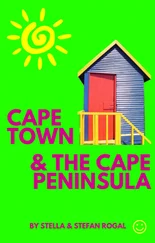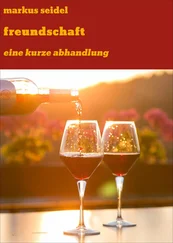In the search for a positive view I saw a film about the city, featuring Telly Savalas, the iconic actor who played Kojak. For some reason he presented this tribute to the beauty of Birmingham, and at one point he says: ‘There are so many beautiful sights, such as the inner ring road, a majestic network, miles of concrete and flyovers that link with the Aston Express.’
I really, honestly don’t want to be cynical, but without question when Telly Savalas saw the script he must have been straight on the phone to his agent screaming, ‘Is that the best they can do, the motherfucking ring road? Hasn’t the place got a beach, a mountain range, something that links up with somewhere better than the Aston fucking Express?’
It does make the place marvellously earthy, though. Whenever I hear people talk about the wit of football fans, the poetry of the terraces, I always think of Birmingham City, whose anthem goes: ‘Shit on the Villa, shit on the Villa tonight, shit on the Villa, because the Villa are shite.’ You can only imagine the excitement as the author paced around his kitchen for inspiration at three in the morning, yearning for a rhyme that went with tonight, and suddenly yelling, ‘I’ve got it – SHITE – it’s PERFECT!’
Something else the town can boast is that there are apparently more lap-dancing clubs per head of the population in Birmingham than in any other city in Europe. Strange that, isn’t it? You’d think that blokes in Birmingham should be able to attract women without paying for it. ‘Shit on the Villa, shit on the Villa tonight’ – don’t tell me the women don’t go for that.
And yet historically Birmingham should be as proud of its intellect as anywhere. For example, any account of the period from around 1790, when science and rational thought had to battle to win their place in European culture, gives a huge mention, alongside Darwin, Franklin and the pioneers of medicine and electricity, to the Birmingham Lunar Society.
Pathetic though it may seem, I can’t help but wonder at the wisdom of calling their groundbreaking group the Birmingham Lunar Society, because I imagine them standing outside each night going, ‘Yep, it’s still there, that moon. It’s a bit smaller than last noit, I hope it don’t disappear altogether, or we’ll have to close our society down.’
Another possibility is that it made sense for Birmingham to emerge as a centre for science at the time, as it was a city driven by engineering. This was a period when viewing the world with a scientific mind was still a challenge to the religious order, so Birmingham became a home for radical groups who saw the new discoveries as a political statement. To view the moon as a satellite that could be studied and analysed was an affront to those who saw it as a heavenly body driven by God’s will.
Keeping with the lunar theme, the doctors, inventors and industrialists of the Society met once a month, on the night of a full moon, and set about promoting the latest scientific debates. They probably saw no distinction between their academic work and their role in establishing Britain’s first anti-slavery campaign, in 1788, long before even most radicals suggested the trade should be abolished. Partly this was in response to the fact that much of the wealth of the city at the time came from the manufacture of guns, which were used to capture slaves. The anti-slavery society also organised a boycott of sugar picked by slave labourers.
The Lunar Society helped establish a tradition of radical movements in the city, though some failed in magnificent fashion. For example a women’s movement was set up in 1825. According to Birmingham: A History of the City and its People: ‘In the mid-nineteenth century a group of young females formed the Birmingham Maidens’ Club, where the members agreed to remain unmarried. But the club had to close down after most of them got married.’
And there’s the Bullring, so named because bulls were once tied there and taunted for the amusement of passers-by, though now despite its name it must be the most impossible place in the world to get a bull, as the finest matador of all time couldn’t coax it through the underpass, round all the angles, up the steps and across the ring roads to the diesel-filled concourse where its ancestors were prodded for fun.
There were riots at the Bullring in 1839, led by campaigners for an extension of the vote. And as Birmingham became the centre of the motor industry the city became central to the trade union movement. The engineers who joined miners to shut down Saltley coke depot in 1972, in support of miners’ pay claims, were responsible for one of the most celebrated union victories of the century.
Birmingham’s response to calamities, such as the pub bombings of 1974 or the decline of the car factories, suggests that they’re seen as traumas that have rocked the whole city, in a way that might also happen in Liverpool or Newcastle.
Perhaps more importantly in shaping a city-wide sense of community, there’s a shared sense of unease over what happened to Birmingham’s statue of King Kong. It used to stand by the Rotunda building in the middle of the Bullring, possibly because someone in the planning department was misinformed, and believed King Kong ended up on top of the Bullring holding a girl from Selly Oak. At one point someone set fire to his rear, which led to a disputed insurance claim, then at the end of the 1970s he suddenly disappeared.
Thirty years later you still hear theories about where he went, as if he’s the city’s Lord Lucan. A typical letter in the Birmingham Post in 2011 said, ‘I remember being absolutely terrified of King Kong as the number 50 bus came around the corner of the outdoor markets and HE came into view. I also remember that it ended up on the Stratford Rd at a coach firm’s depot/office.’
Another story is that he turned up outside a car dealers in Digbeth, and it’s said that in 1976 he was sold for £12,700 to a Scottish company called Spook Erections, which put him in the markets it ran around the country. A recent article in the Birmingham Post informed its readers that the statue ‘has been found lying in a car park in Penrith’.
Unlike those of Lord Lucan, you’d think these sightings would be easy to verify, what with him being twenty feet tall and incapable of moving, and I can’t imagine Penrith is the sort of town where a King Kong can be dumped in a car park without being spotted, the way you might just get away with it in New York. Or maybe he’ll continue to create these wispy visions, and there’ll be unconfirmed reports of him living in Bolivia disguised as Godzilla, being employed by the CIA to intimidate anti-government forces in Angola, or being melted down by the Mafia after a row about gambling debts.
Another unifying fact about the city is the one about it enjoying more miles of canal than Venice, although this seems to miss the point, as you might as well boast that there’s more paint in a warehouse in Luton than there is on the Sistine Chapel. The important fact is that it’s quality rather than quantity that attracts tourists when it comes to a canal system. The Birmingham Tourist Board seems to think otherwise, and must assume that visitors to Venice find the place disappointing because there’s only one canal visible from St Mark’s Square, and might say, ‘I hear there are a whopping four round the back of the Stetchford gasworks passing under the M5 interchange where the junkies leave their needles. We’ll go there next year.’
Birmingham’s canals are another sign of its influence at the start of the industrial age. They were the earliest in Britain, created to transport iron from the Black Country to the centres of engineering. Now, for all the canal miles that gives the city, not everyone is confident of their value as a tourist attraction. For example, when a friend arranged a canal boat weekend in Worcestershire, she was told by the agency that made the booking, ‘We don’t recommend you take the boat into Birmingham. You just don’t know WHAT might happen.’
Читать дальше












